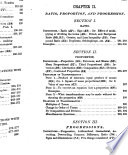 | Edward Olney - Algebra - 1877 - 466 pages
...= m*. Whence xz is the logarithm of the zth power of m. QE j>. 124:. Prop. 4. The logarithm of any root of a number •is the logarithm of the number divided by the number expressing the degree of the root. DEM. — Let a be the base, and x the logarithm of m. Then... | |
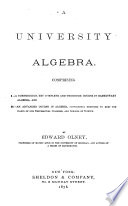 | Edward Olney - 1878 - 360 pages
...axz=m*. Whence xz is the logarithm of the zth power of m. QE D 181. Prop. 4. — The logarithm of any root of a number is the logarithm of the number divided by the number expressing the degree of the root. DEM. — Let a be the base, and x the logarithm of m. Then... | |
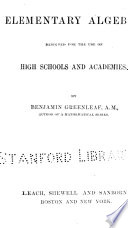 | Benjamin Greenleaf - Algebra - 1879 - 350 pages
...in which xp= loga m p. ELEMENTARY ALGEBRA. 3ßl, The logarithm of the root of any number is equal to the logarithm of the number, divided by the index of the root. For, assume the equation, dx = m, and extracting the rth root of both members, we have, X дc = y,... | |
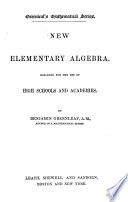 | Benjamin Greenleaf - 1879 - 346 pages
...have <ff = mp, in which xp = loga m f. 361 • The logarithm of the root of any number is equal to the logarithm of the number, divided by the index of the root. For, assume the equation, c?= m, and extracting the rth root of both members, we have, in which, -... | |
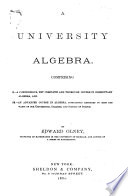 | Edward Olney - Algebra - 1880 - 354 pages
...ах-=тг. Whence xz is the logarithm of the zth power of m. QE D 181. Prop. 4. — The logarithm of any root of a number is the logarithm of the number divided by the number expressing the degree of the root. DEM. — Let a be the base, and x the logarithm of m. Then... | |
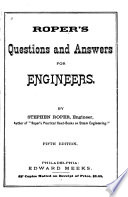 | Stephen Roper - Steam engineering - 1880 - 84 pages
...number may be found by logarithms as follows : The logarithm of the root of a given number is equal to the logarithm of the number divided by the index of the root. Hyperbolic logarithms is a system of logarithms, so called, because the numbers express the areas between... | |
 | William Findlay Shunk - Railroad engineering - 1880 - 362 pages
...the number multiplied by the exponent of the power. The logarithm of any root of a number is equal to the logarithm of the number divided by the index of the root. 0. The preceding principles enable us to abridge labor in arithmetical calculations, by using simple... | |
 | Edward Olney - Algebra - 1882 - 358 pages
...Whence хг is the logarithm of the zth power of да. QE D 181. Prop. 4. — The logarithm of any root of a number is the logarithm of the number divided by the number expressing the degree of the root. DEM. — Let a be the base, and x the logarithm of m. Then... | |
 | Simon Newcomb - Algebra - 1882 - 302 pages
...Whence nh — log jo", or n log p = logy. THEOREM X. The logarithm of a root of a number is equal to the logarithm of the number divided by the index of the root. Proof. Let s be the number, and let p be its nth root, so that p = VU and s = p". Hence log s = logp"... | |
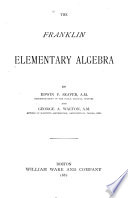 | Edwin Pliny Seaver, George Augustus Walton - Algebra - 1881 - 304 pages
...appears (Art. 384) that is the logarithm of y/jV. Hence The logarithm of a root of a number is equal to the logarithm of the number divided by the index of the root. 395. Briefly expressed in formulas the propositions just proved are as follows: (1) }og(NN'N" . . .)... | |
| |